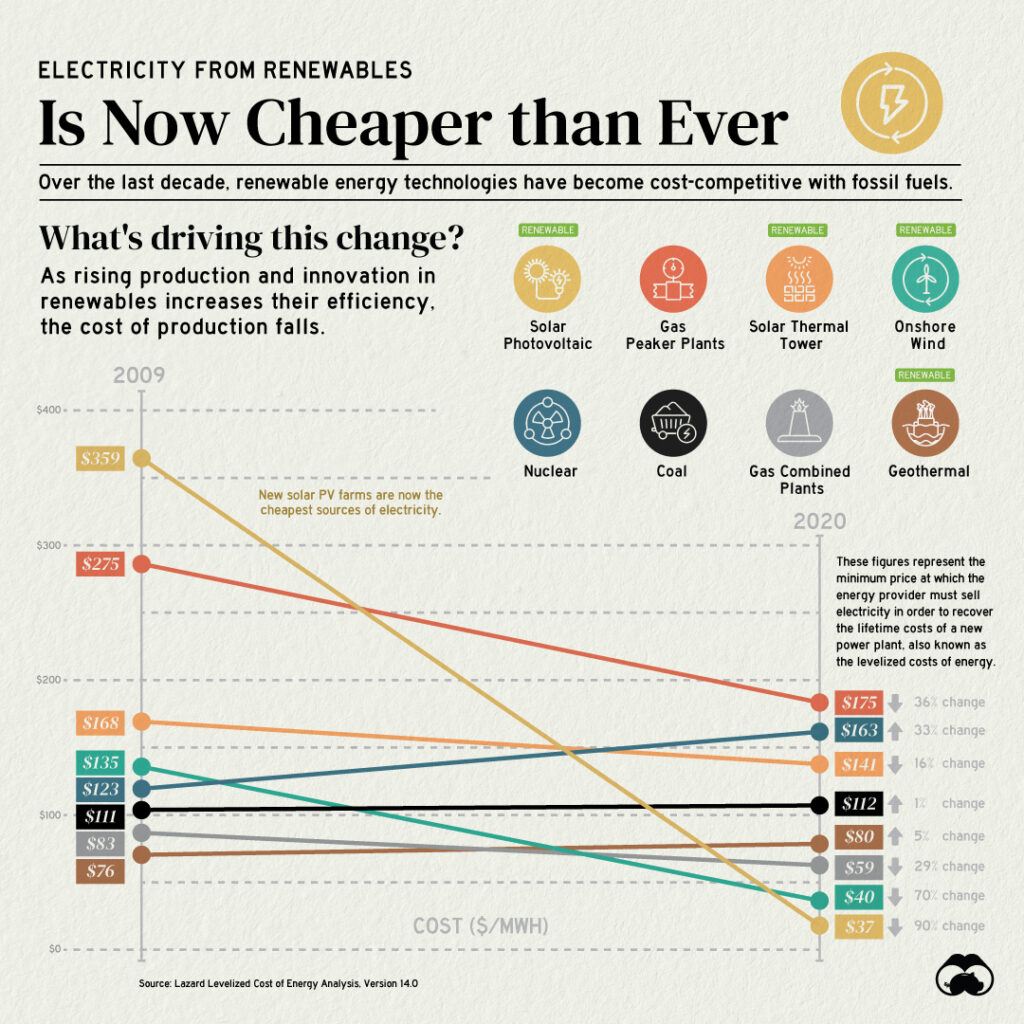Is renewable energy cheaper in the US?

In recent years, the focus on renewable energy has been growing as society becomes more aware of the environmental impact of traditional energy sources. One of the key factors in determining the feasibility of renewable energy is its cost. This article aims to explore whether renewable energy is cheaper in the US and the factors that affect its costs.
- The Cost of Renewable Energy in the US
- Factors Affecting Renewable Energy Costs
- Renewable Energy vs. Non-Renewable Energy: Cost Comparison
- Government Incentives and Policies
- Case Studies: Affordability of Renewable Energy Projects
- Challenges and Limitations
- Future Outlook: The Potential for Lower Renewable Energy Costs
- Conclusion
- Frequently Asked Questions
The Cost of Renewable Energy in the US
The cost of renewable energy in the US varies depending on the specific source. Generally, the cost has been declining over the years due to advancements in technology and increased adoption. However, it is important to note that the cost can still vary significantly depending on factors such as location, availability of resources, and the scale of the project.
Factors Affecting Renewable Energy Costs
Several factors influence the costs of renewable energy. These include:
- Technology: The efficiency and availability of renewable energy technologies play a crucial role in determining their costs.
- Resource Availability: The availability and accessibility of renewable resources, such as wind, solar, and hydro, impact the costs of harnessing them for energy production.
- Infrastructure: The existing infrastructure and grid integration also affect the costs of renewable energy projects.
- Economies of Scale: Larger-scale renewable energy projects tend to have lower costs per unit of energy generated.
Renewable Energy vs. Non-Renewable Energy: Cost Comparison
While the upfront costs of renewable energy projects may be higher compared to traditional non-renewable energy sources, the long-term operational costs are generally lower. Renewable energy sources do not rely on finite resources and are not subject to price fluctuations as seen with fossil fuels. This makes renewable energy more financially stable and potentially more cost-effective over the lifespan of the project.
Government Incentives and Policies
The US government offers various incentives and policies to promote the adoption of renewable energy. These include tax credits, grants, and loan programs that aim to reduce the initial investment costs and encourage the development of renewable energy projects. These incentives can significantly impact the overall affordability of renewable energy.
Case Studies: Affordability of Renewable Energy Projects
Several case studies have shown that renewable energy projects can be affordable and cost-competitive. For example, the cost of solar energy has decreased significantly in recent years, making it a viable option for both residential and commercial applications. Wind energy projects have also seen cost reductions, making them increasingly attractive for power generation.
Challenges and Limitations
Although renewable energy is becoming more affordable, there are still challenges and limitations to consider. The intermittent nature of certain renewable energy sources, such as solar and wind, requires additional investments in energy storage and grid management. Additionally, the costs of integrating renewable energy into existing infrastructure can be a barrier to widespread adoption.
Future Outlook: The Potential for Lower Renewable Energy Costs
The future outlook for renewable energy costs is promising. Technological advancements, economies of scale, and continued government support are expected to drive further cost reductions. As more countries and industries transition to renewable energy, there will be increased investment and innovation, leading to improved efficiency and affordability.
Conclusion
While the initial costs of renewable energy projects may vary, the long-term affordability and environmental benefits make them an attractive option. The US has seen a significant reduction in renewable energy costs, and government incentives continue to support the growth of the industry. As technology advances and economies of scale are realized, renewable energy is expected to become even more affordable in the future.
Frequently Asked Questions
1. What is the current cost of renewable energy in the US?
The cost of renewable energy in the US varies depending on the specific source and location. However, overall, the costs have been declining due to advancements in technology and increased adoption.
2. Are there any subsidies or incentives available for renewable energy projects?
Yes, the US government offers various subsidies and incentives for renewable energy projects, including tax credits, grants, and loan programs. These incentives aim to reduce the initial investment costs and promote the development of renewable energy.
3. How do the costs of renewable energy compare to traditional energy sources?
While the upfront costs of renewable energy projects may be higher compared to traditional non-renewable energy sources, the long-term operational costs are generally lower. Renewable energy is not subject to price fluctuations and provides more financial stability over time.
4. Will the cost of renewable energy continue to decrease in the future?
Yes, the cost of renewable energy is expected to continue decreasing in the future. Technological advancements, economies of scale, and government support are driving further cost reductions and making renewable energy more affordable.

Leave a Reply